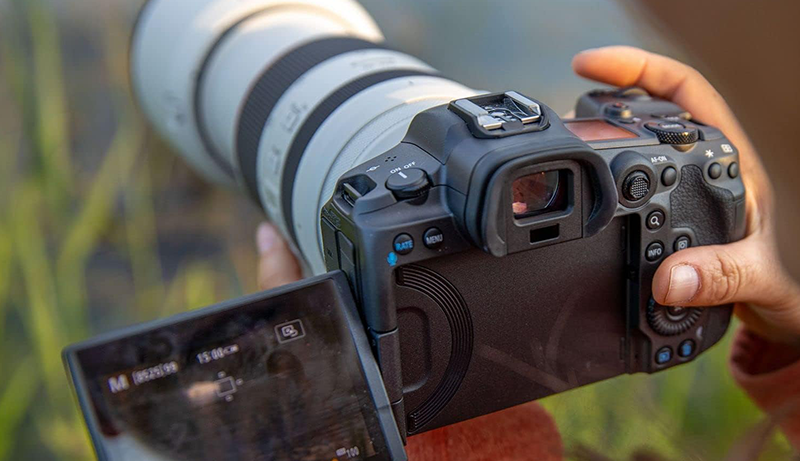Both softball and baseball share the fundamental concept of a pitcher delivering a ball to a batter, who then attempts to hit it with a bat. However, these two sports differ significantly in several key aspects.
Firstly, softball fields are smaller than their baseball counterparts. The distance between home plate and the pitcher’s plate is 43 feet in softball, compared to baseball’s 60 feet, 6 inches.
The size of the balls also varies, with softballs being larger and, as the name suggests, softer than baseballs.
Pitching style is another point of distinction. In baseball, pitchers throw overhand, while in softball, the pitcher opts for an underhand throw.
Team composition is different as well. Baseball teams typically field nine players, while softball teams often consist of ten players.
When it comes to scoring, baseball games are divided into nine innings, whereas softball games typically span seven innings.
These examples highlight just a few of the differences between the two sports. In the end, while sharing fundamental concepts, each sport provides a distinct and thrilling experience, both for those playing and those watching.
What are the core differences between Softball and Baseball?
The key disparities between baseball and softball extend beyond the bat, ball, pitching technique, playing surface, and game length. For a detailed exploration of these differences, continue reading.
1. Bat
The fundamental differences lie in the size and weight of bats used in baseball and softball. Baseball bats typically are longer and heavier compared to their softball counterparts.
In softball, the maximum specifications for a bat include a length of 34 inches (86.4 cm), a weight not exceeding 1007 grams, and a width not exceeding 2.25 inches. The shorter length and lighter weight make it easier for players to handle and swing the bat, particularly in indoor settings.
In contrast, a full-size baseball bat is generally 42 inches long (106.7 cm) with a diameter of 2.75 inches. However, local leagues may utilize 34-inch bats. The length and weight of baseball bats are designed for powerful and swift ball striking.
It’s essential to note that different levels of baseball play, from youth to professional, have varying rules and requirements for bat length, weight, and diameter.
In essence, the primary distinctions between baseball and softball bats lie in their size and weight. While baseball bats prioritize power and speed, softball bats, being shorter and lighter, are better suited for indoor play.
2. Ball
Another significant contrast between baseball and softball lies in the shape, size, and color of the balls.
Baseballs in the game of baseball typically have a circumference ranging from 9 to 9.25 inches and a weight between 5 and 5.25 ounces. Crafted with leather and constructed from cork or rubber, these balls are typically white with red stitching.
Softballs, in contrast, are smaller and lighter. They generally weigh between 6.25 and 7 ounces, with a circumference ranging from 11.88 to 12.13 inches. Wrapped in synthetic materials and constructed from rubber, softballs are often yellow, enhancing visibility during close-range throws.
The size, weight, and color of the ball significantly impact the dynamics of the game. Larger, heavier softballs move at a slower pace, making them suitable for indoor play and beginners. Smaller, lighter baseballs are preferred for outdoor play, offering increased speed and a greater challenge for more seasoned players.
In summary, the most noteworthy difference between baseball and softball lies in the characteristics of the ball itself—size, weight, and color—dictating the style of play and suitability for different skill levels.
3. Field Dimensions

Softball, initially designed as a kid-friendly alternative to baseball for indoor play, has distinct field dimensions that set it apart from its counterpart. Originating in 1887 through George Hancock’s innovation, softball features smaller fields compared to baseball, influencing the dynamics of the game significantly.
In softball, bases are 60 feet apart, contrasting with baseball’s 90 feet, resulting in more compact fields. The outfield fence, which is typically 220 feet away from home plate in softball, is considerably closer than baseball’s 400 feet. Additionally, the distance between the pitcher’s rubber and home plate is shorter in softball, measuring 46 feet compared to baseball’s 60 feet.
These differences in field dimensions have a profound impact on gameplay and strategy. The smaller softball fields encourage heightened movement, increased opportunities for hits and runs, and more aggressive baserunning due to the closer bases. The reduced distance between the pitcher and batter’s box also enhances the potential for ball contact and activity on the field.
4. Pitching Technique
Another notable distinction between softball and baseball lies in their pitching techniques.
In softball, pitchers deliver the ball underhand, utilizing an elevated pitcher’s plate. This underhand motion, being slower and more controlled, makes it easier for batters to strike the ball and for the defense to respond promptly, fostering increased action and scoring opportunities.
Conversely, baseball pitchers employ an overhand or sidearm delivery, generating greater speed and movement in the ball. This increased velocity, while contributing to more strikeouts, also reduces overall activity on the field.
The contrast in pitching styles underscores a fundamental difference between the two sports, with softball emphasizing controlled underhand pitching for enhanced play dynamics and baseball favoring overhand delivery for heightened power and velocity.
5. Pitching Distances: A Clear Contrast
One of the notable differences between baseball and softball lies in the pitching distance, a factor that remains constant in baseball but varies across softball levels.
Softball pitching distances fluctuate with the level of competition. For amateur women, it stands at 40 feet (12.19 meters), while in college or international play, it extends to 46 feet (14.02 meters). High school softball maintains a distance of 43 feet (13.11 meters). Conversely, baseball adheres to a fixed pitching distance of 60 feet 6 inches (18.44 meters) from Little League to the professional level.
The varying pitching distances significantly impact the dynamics and strategies employed in each sport. The increased pitching distance in baseball enhances the challenge for hitters, fostering more power and velocity. In contrast, the shorter pitching distance in softball fosters a faster-paced game with increased opportunities for hits and runs.
In summary, the pitching distance is a crucial distinction between baseball and softball, showcasing different lengths in softball based on the level of play and a consistent distance in baseball across all levels.
6. The Pitching Circle: Elevating the Game
Another noteworthy difference lies in the design of the pitcher’s mound in baseball and softball.
Softball’s level pitcher’s plate, aligned with the field, simplifies the pitcher’s task of delivering strikes and keeping the ball within the strike zone. This design increases the likelihood of batter-ball contact, leading to more action and scoring opportunities.
In contrast, baseball features a slightly elevated pitcher’s mound, typically around 10 inches above the field. This elevation not only makes it more challenging for batters to make solid contact but also allows pitched balls to slant downward, adding power and velocity. The raised mound enhances a pitcher’s ability to throw breaking pitches, making it more difficult for hitters to connect with the ball.
In essence, the elevation of the pitcher’s mound is a significant distinction between baseball and softball. Softball’s level plate encourages a dynamic and action-packed game, while baseball’s elevated mound adds complexity, increasing power and velocity while introducing strategic pitching dynamics.
7. Ball Grip Techniques
Different ball sizes and shapes in softball and baseball require distinct grasping methods for optimal control and precision.
Softball players commonly hold the ball with their pinky finger on the side and their ring, index, and middle fingers on the seam. This grip, tailored for the larger and softer softball, enhances control and precision during throws.
In contrast, baseball players often grip the ball with their middle and index fingers squarely on the seams, enabling greater force and speed when throwing the smaller and more rigid baseball.
While players have the freedom to choose the grip that feels most comfortable to them, following these suggestions can enhance the ease of ball handling and improve throwing control.
8. Lead-Off Rules
Lead-off regulations present another distinction between softball and baseball.
In softball, a hitter or runner can only lead off when the pitcher releases the ball. This means the runner cannot advance to the next base until the pitcher has initiated the throw.
Conversely, in baseball, the runner can attempt to lead off as soon as the ball is in motion. This implies that, with the pitcher starting their wind-up or delivery, the runner can begin moving toward the next base.
These variations in lead-off rules significantly impact the strategy and gameplay of each sport. In softball, the limited time to lead off after the pitcher releases the ball makes stealing a base more challenging. In baseball, the runner can attempt to lead off as soon as the ball is in motion, providing more time for stealing bases.
9. Distinct Attire
Certainly, discerning between baseball and softball players can be aided by their uniforms. Despite sharing similar jerseys, shirts, or helmets, baseball and softball players often wear distinctive pants and socks.
In baseball, players commonly opt for full-length pants that cover their entire legs, providing comprehensive protection and support for the legs, hips, and knees.
Conversely, in softball, it’s common to see players donning knee-length or shorter pants, enhancing flexibility and freedom of movement. Paired with knee-high socks, these outfits provide additional security and support for the player’s shins and legs.
Distinguishing baseball from softball uniforms often comes down to the length of the pants and the style of socks worn by the players.
10. Varied Game Duration
Another avenue to differentiate between baseball and softball lies in the duration of the game and the number of innings played.
Baseball games typically extend to nine innings at the collegiate and professional levels. In contrast, softball games, whether at high school, college, or professional tiers, commonly conclude after seven innings.
This discrepancy in the number of innings significantly impacts the overall game length. While an average softball game may wrap up in less than an hour, a typical baseball game can extend up to three hours.
The duration of the game and the number of innings played thus provide another means to distinguish between the two sports, with baseball games generally being longer than their softball counterparts.
Final Thoughts
Although softball and baseball share similarities, they are distinct sports with differences in ball characteristics, throwing techniques, field dimensions, pitcher’s mound height, gripping methods, lead-off rules, uniforms, and inning counts. This essay aims to clarify these distinctions between the two sports.
If you have any further questions about baseball or softball, please don’t hesitate to ask in the comment section. Happy playing, and thank you for taking the time to read!





Leave a Reply